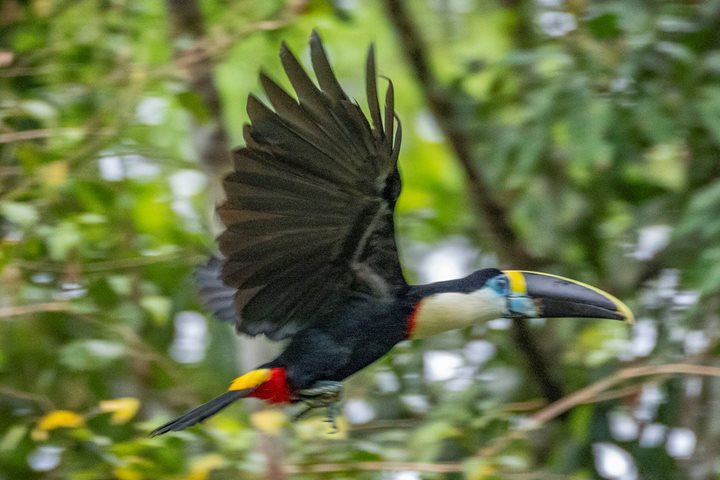Today we started our day again with an early morning exploration on board the skiffs. The exuberant vegetation casted its reflection on the mirror-like still waters, creating a beautiful scene. As we slowly moved up current along the Zapote River we encountered numerous creatures, some already familiar to us like the ever-present ringed kingfisher or the black-collared hawk (locally known as “mama vieja,” meaning “grandmother” due to its white head), but also some new ones like the crane hawk or the monk saki monkey. A myriad of mysterious calls, songs, and other sounds came from all over the rainforest, including the donkey-like call of the horned screamer and the liquid song of the oropendola, everyone’s favorite.
After a delicious breakfast, we headed out again for some more exploration of the area and later visited the small fishing community of Zapote. Villagers there make a living by fishing the rich waters around them and showed us some examples of the many kinds of fish that they capture. We were able to witness their boat-building technique and marveled at the extremely short time it takes them to make a 25-feet long wooden boat using only a chainsaw and other simple tools—six days! The local women and their daughters offered for sale some of the handicrafts they made and that reflects their life in such a frontier.
During the afternoon we boarded the skiffs again to explore the Pacaya River, which took us way inside the Pacaya Samiria Reserve. The Pacaya River is very remote and wild and we got the chance to watch a great variety of wildlife, including pink river dolphins, brown-throated sloths, and three different species of monkeys: squirrel, brown capuchin, and red howler. Big numbers of great egrets and neotropical cormorants roosted around the lagoon where several of us went out for a swim, marking the end of another beautiful in the upper Amazon.







